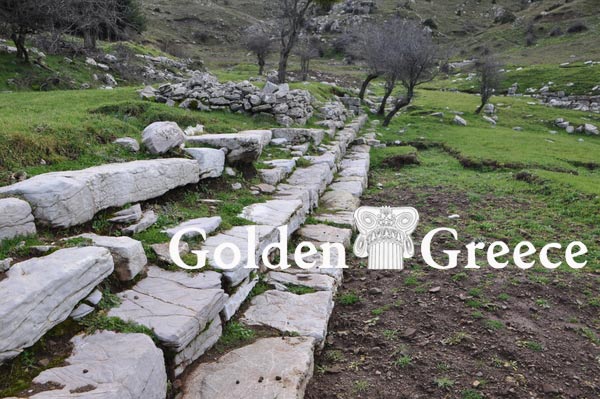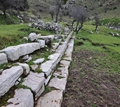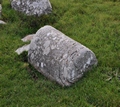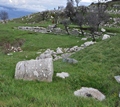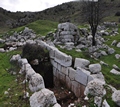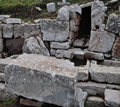
At a distance of 3 km below the altar of Lycaeus Zeus is the Stadium or Hippodrome where the Lycaea were held, which included athletic and equestrian competitions.
The ancient Lycaea were athletic, musical and art competitions of the Arcadian people in honor of Lycaeus Zeus and Pan, protector of nature. They took place near the "Holy Peak" of the Arcades, on Mount Lykaios. They were established by the mythical Lycaon who reigned after Pelasgus. The first mention of them comes from Pindar who characterizes the Lycaea as the most important festival of the Greeks after the Eleusinia. Later authors as well as various inscriptions refer to the Lycaea or cite lists of Lycaonians.
The great festivals of the Lycians were considered equal to the Panathenaic and Eleusinian ones.
Until the 2nd century AD, the Lycaea were held on Mount Lycaea near the Sanctuaries of the gods Zeus and Pana and were part of the festive events that united the winner with the divine power. After the 2nd AD century the Lycaea were moved to Megalopolis. The games were held every four years, most likely in early August.
The Lycaea were considered by the ancient Greeks to be games older than the Panathenaia and the Olympic games, as Pausanias testifies, but also the Parian chronicle which dates their establishment back to the reign of Pandion, son of Cekrops, in Athens, i.e. during the 14th century BC.
During the celebration of the Lykaios, first the sacrifice was made at the altar of Lykaios Zeus at the top of the Lykaios mountain, and then the men's and children's competitions as well as the musical competitions were held. They had the name of the high priest of the Sanctuary of Zeus or Pan who held the priesthood during the games.
The main events of the Lycians were: the stadium, the track, the dolichos, the pentathlon, the pancratium, wrestling, the pygmy, as well as the chariot races: the border, the quadruplet of perfect horses and the quadruple pole vault. The competitions were held with proper organization and under certain regulations of participation and sports, and had as their ultimate goal the spiritual, mental and physical exercise and health of the young and aimed at the perfection of human nature.
In the Lycaea all the ancient Arcadians manifested their racial unity in practice: they took part under their national name, Arcadians, as a group, without mentioning the city of their particular homeland and origin. Also, as Arcades, Lycaionikes were recorded on the memorial columns and on the statues. As much as they were divided among themselves, when they reached the Lycaean mountain, they felt that they were in the common original cradle of their ancestors and competed in the Lycaea with the other Greeks considering themselves part of a common people.
Editor: Fotini Anastasopoulou





